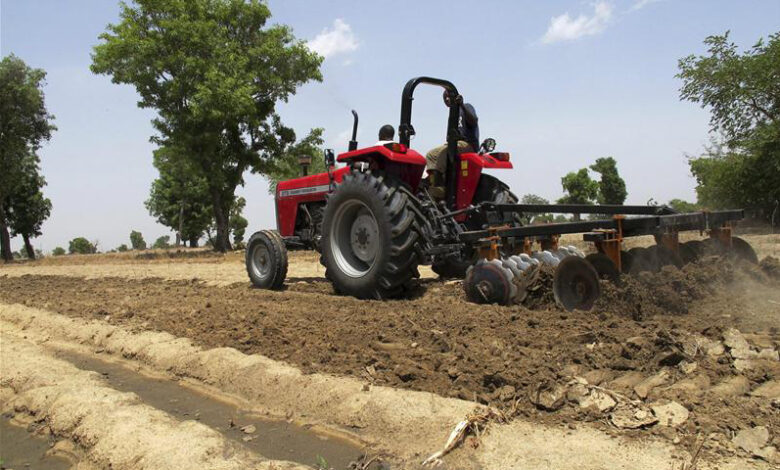
Muhammad Faheem
The government of Khyber Pakhtunkhwa has designated all the land outside the Ring Road Mardan as agricultural land and imposed a ban on large-scale construction until the year 2040. Furthermore, they have initiated the immediate implementation of six zones within Mardan City.
In its effort to manage land use, the provincial government has introduced a comprehensive plan for Abbottabad, Charsadda, and Mardan districts. Specifically for Mardan City, the Master Plan 2040 has been formulated. Under this plan, the land in Mardan will be divided into various zones, including Central Business, Miscellaneous Use, Economic Zone, Education Zone, Health Zone, and Recreation Zone.
This plan evaluates the consequences of urbanization, such as population growth, rezoning, and the expansion of urban boundaries, on essential services. It recommends strategies to upgrade urban infrastructure to align with urban growth, proposing affordable housing, livelihood opportunities, and recreational amenities for residents within the existing city and its surrounding areas.
Also Read: Saidu Sharif Swat Hospital Denies Burqa Ban for Nursing Staff
The objective is to guide and stabilize urban development and future population and economic expansion in designated urban centers. A distinct urban settlement hierarchy is planned for each district to be self-sufficient and interconnected at the regional level.
In the case of the Mardan City Master Plan 2040, the region beyond the Mardan Ring Road has been earmarked as agricultural land, with no significant construction allowed outside the Ring Road until the year 2040.
This plan encompasses the plans and policies of other authorities sanctioned by the Khyber Pakhtunkhwa government, including those of local governments, following a comprehensive review and adherence to planning standards.
The plan recommends strategies for urban revitalization and the enhancement of slums, promoting mixed-use, high-density, vertical development in suitable areas within and adjacent to the existing urban core. It also aims to enhance connectivity and transit mobility to support and complement mixed-use high-rise development, thereby reducing the financial and environmental costs associated with traditional travel. To manage the expansion of natural or agricultural land, the plan suggests extending Urban Boundary Planning and reorganizing adjacent Village Councils as Neighborhood Councils (NCs) to better manage urban development.
Non-conforming land uses will be relocated to align with land use zoning, ensuring the gradual transition of existing industries with adverse effects to the proposed industrial zones established in the Mardan City Master Plan. Small-scale industries, like cottage industries with minimal environmental impact, may continue with approval from relevant authorities, while new industries will be exclusively established in industrial zones.
Implementation of Urban Land Use Plan in Charsadda, Mardan, and Abbottabad
A comprehensive land use plan has been devised for the districts of Charsadda, Abbottabad, and Mardan, extending until the year 2038. This plan has been formulated in close collaboration with the District Land Use Planning and Management Committee, Local Enforcement Units, and other relevant departments responsible for urban infrastructure and facilities. These entities will diligently adhere to the proposed land use plan. The designated areas for various land uses are extensive, and it is imperative that the allocation of specific land uses within these areas is executed judiciously.
In alignment with the Provincial Land Use and Building Control Act of 2021 and all applicable laws, regulations, and rules of the Provincial Land Use and Building Control Authority, as well as the Local Government Elections and Rural Development Department, the district's land use will be regulated to allow permitted uses and prevent prohibited ones. Furthermore, the evolving policies aimed at enhancing and safeguarding the environment will be seamlessly integrated into future planning, following the guidelines outlined in the Land Use Plan.
A vital aspect of this plan is its regular review and adaptation. The Charsadda, Abbottabad, and Mardan District Land Use Plan will undergo renewal at five-year intervals during its implementation period. This plan will take immediate effect and supersede any existing land use plans in place.
Restructuring of Khyber Pakhtunkhwa's Urban Policy and Provincial Division into Three Zones
In a significant development, the Khyber Pakhtunkhwa government has restructured its urban policy and divided the province into three distinct zones. These zones include the Southern districts, the Central districts, and the Malakand and Hazara divisions, each being designated as separate entities.
An official announcement from the Local Government Department has introduced six new provisions within the revised Khyber Pakhtunkhwa Urban Policy. This policy is geared towards providing strategic direction and a roadmap to the provincial government of Khyber Pakhtunkhwa, with the overarching goal of creating inclusive opportunities for individuals, businesses, and communities. These policy changes are set to drive social and economic progress in urban areas while maintaining a strong commitment to environmental sustainability.
The urban policy is designed to cater to the distinctive needs of the three newly defined zones, namely the North, Central, and South zones. The Northern zone encompasses the Hazara and Malakand divisions, the Central zone includes the Peshawar and Mardan divisions, and the Southern zone comprises Kohat, Bannu, and Dera Ismail Khan. It's worth noting that all provisions of the urban policy are applicable to these three zones without exception.
Additionally, the urban policy extends its influence to the jurisdiction of Urban Area Development Authorities and Development Authorities under the Khyber Pakhtunkhwa Tourism Act. The provincial government has made it explicitly clear that the policy for each city will undergo periodic review, with evaluations conducted every five years, starting after the year 2030.